Kent Marinkovic took a boat of folks attending the Neil Pryde Dealers Meeting in Bimini out to the Sapona. Kent, Dan Floyd and Damien Leroy shot images from the boat while I took a GoPro on the ship to shoot from above. A bunch of folks jumped off the wreck caught from above and below in many cases. I decided to do a swan dive off the bow GoPro first. Denise with GoPro assured me if I flooded the housing on impact they would fix things. It didn't flood, held up like a champ! I kited out to the Sapona on the first day with a GoPro and shot the wreck. Images from that are included to add perspective in the clip. Here is the video:
https://vimeo.com/19092402
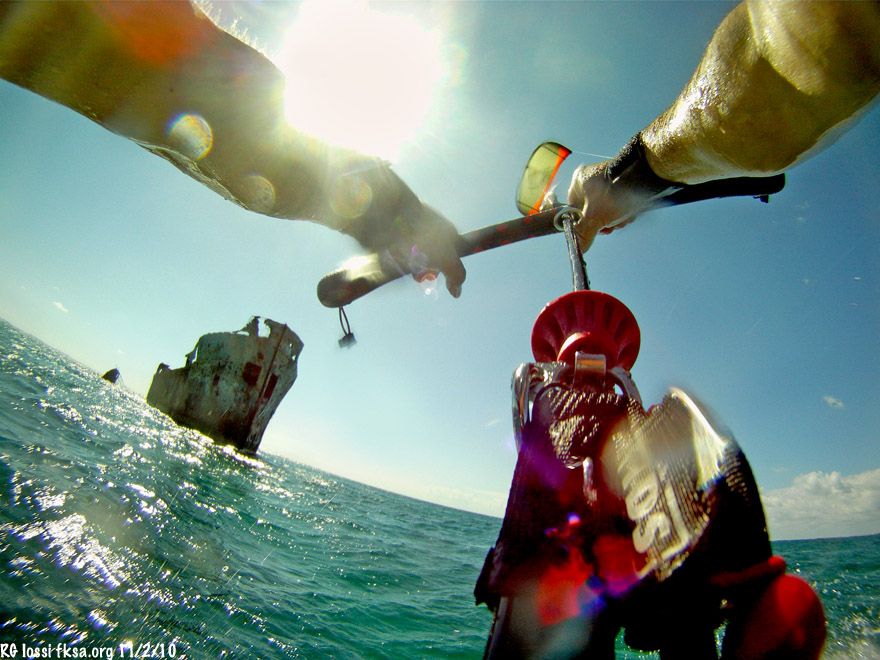
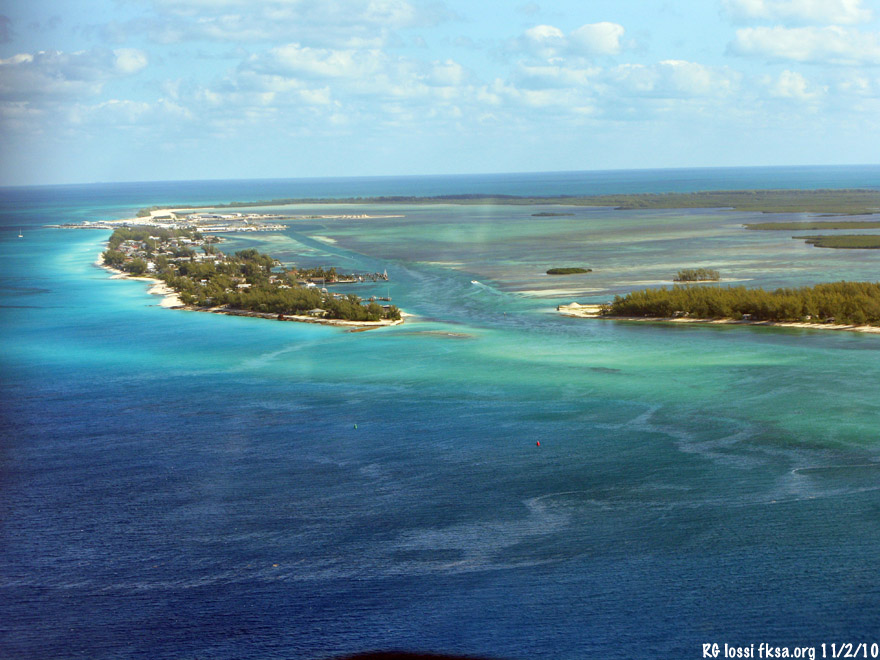
Flying over North and South Bimini, the Sapona is grounded on the flats a few miles to the SSE of here.
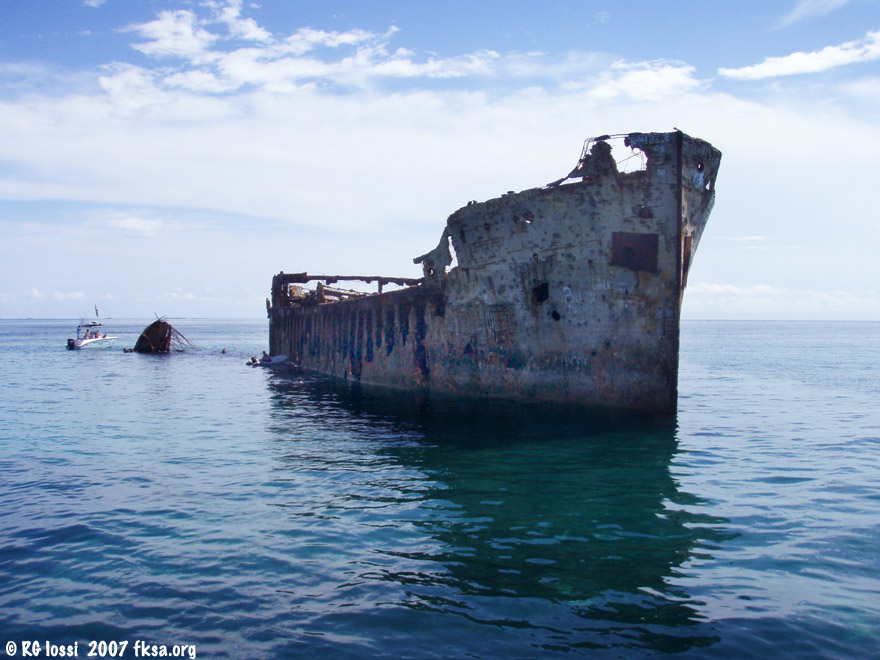
President Woodrow Wilson approved the Emergency Fleet Corporation program on April 12, 1918 which was intended to construct 24 ferrocement "Liberty" ships for service in WWI. In an effort to maintain shipping despite a serious steel shortage. When the war ended in November 1918, only 12 ferrocement ships were still under construction with none completed. Eventually the 12 vessels were completed and sold to private buyers for use for transporting freight, storage, and even to be scraped. The 350 ft. SS Sapona was originally constructed as a ferrocement Liberty ship at the end of WWI. The S. S. Sapona was a cargo steamer built by the Liberty Ship Building Company in Wilmington, North Carolina and launched in January 1920. It was sold as scrap to Carl G. Fisher in Miami Beach, Florida who traded the ship's engine and machinery to a dredging company in exchange for dredging. The ship was used for bulk oil storage. In 1924, the Sapona was sold to Bruce Bethel, a rum runner based in the Bahamas. Bethel towed the ship near Bimini where she was used as a warehouse for liquor during Prohibition. He also wanted to use it for a night club and brothel eventually. The Sapona was driven aground on to the flats inside Turtle Rocks and south of South Bimini during the Hurricane of 1926. The stern of the ship was sheered off during the storm. The liquor stocks onboard were also destroyed in the hurricane, ruining Bethel.
It was used for bombing and strafing practice during WWII. Missing Flight 19 of Avengers from Ft. Lauderdale, Fl vanished after a bombing run here. Ian Fleming even used it as the hiding spot for atomic bombs in his novel "Thunderball." The movie altered the venue to something more romantic in the Exumas.
The Sapona was purchased by Carl G. Fisher in Miami Beach, Florida. Fisher traded the ship's engine and machinery to a dredging company in exchange for dredge work and the ship itself was used for oil storage.
In April of 1924, the Sapona was sold to rum runner, Bruce Bethel, in the Bahamas. He towed the ship near Bimini where she was used as a floating warehouse for rum and whiskey during Prohibition. Bethel also planned to use the ship as a night club.
In 1926, the Sapona ran aground on a reef during a hurricane and the stern of the ship broke off from the rest of the ship. Bethel's liquor stocks were also destroyed and he died penniless in 1950.

A circular on the construction of concrete ships
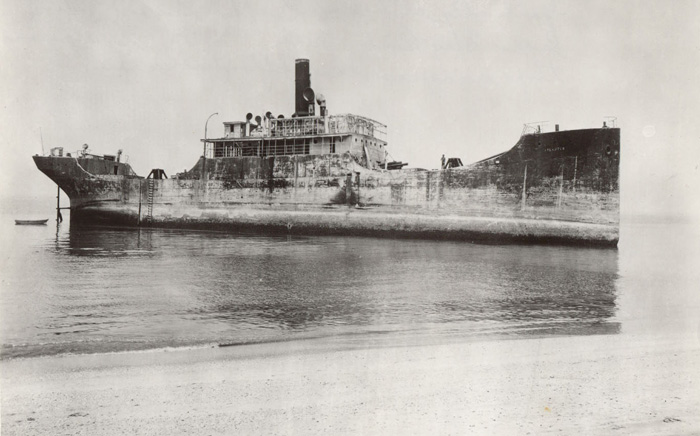
The SS Atlantis grounded off Sunset Beach in Cape May, NJ on June 8th, 1926 and may have resembled the Sapona.
http://www.concreteships.org/ships/w...antus1926.html
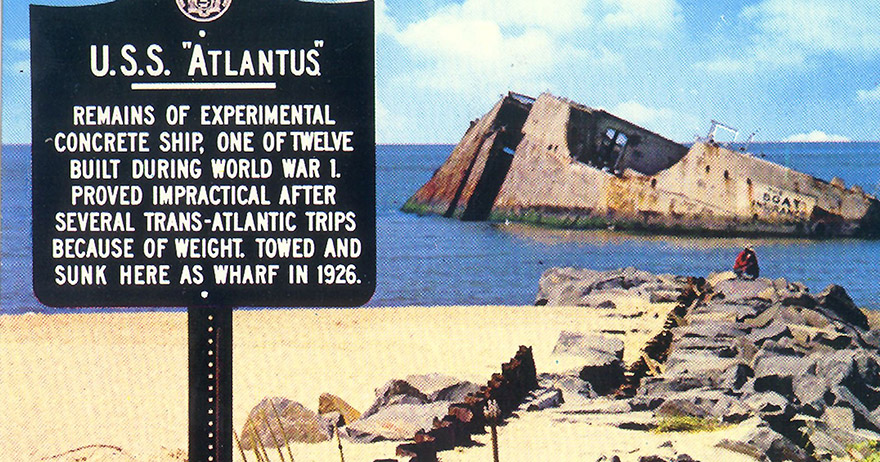
A postcard showing the grounded SS Atlantis.

Another of the dozen sisterships of the SS Sapona, the SS Polias. This one struck a ledge off Port Clyde, Maine, "shattered" and largely sank.
https://www.wearethemighty.com/artic...or-world-war-i
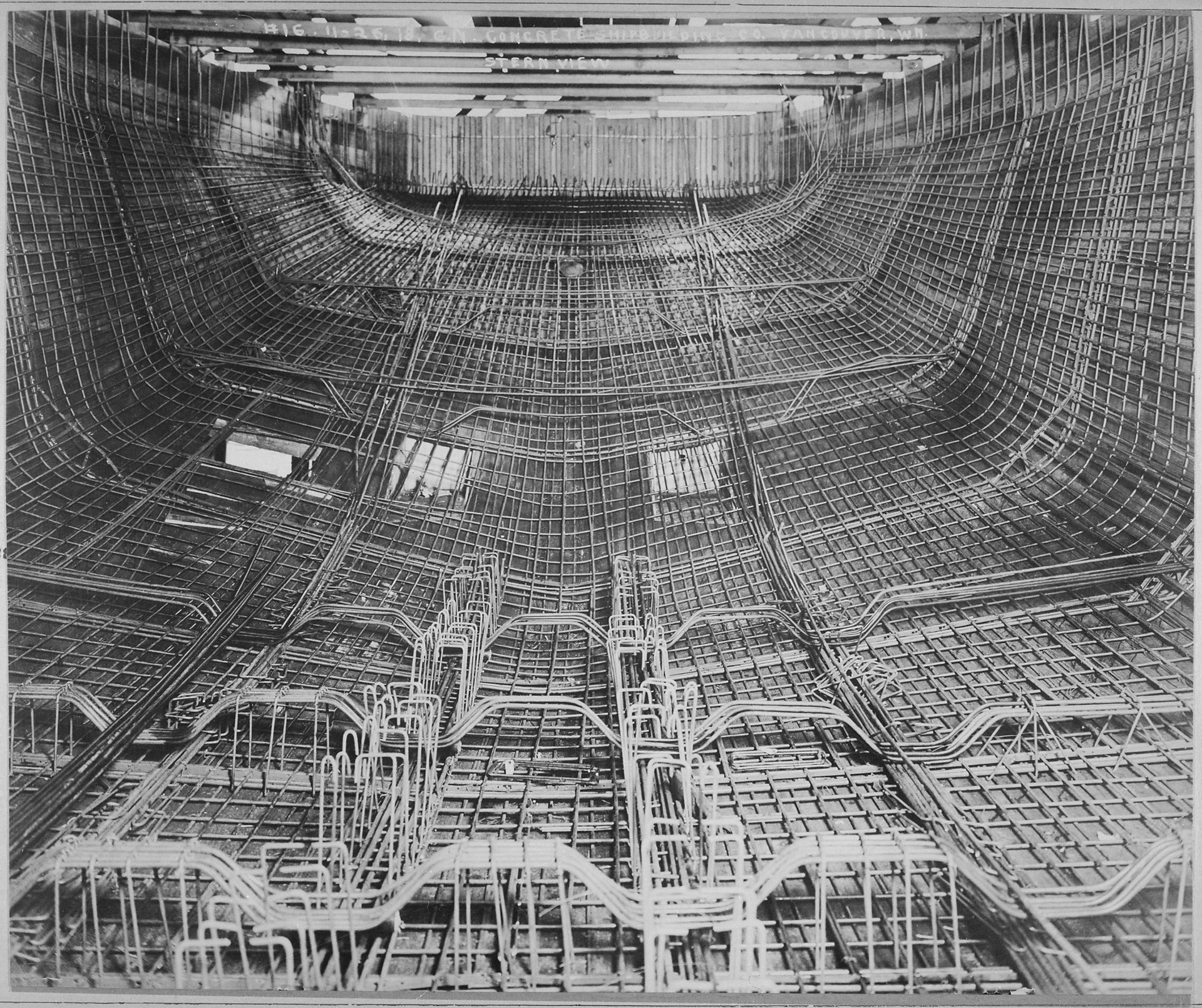
Placing steel reinforcement of the hull before casting.
http://es.wikipedia.org/wiki/Barcos_de_hormigón
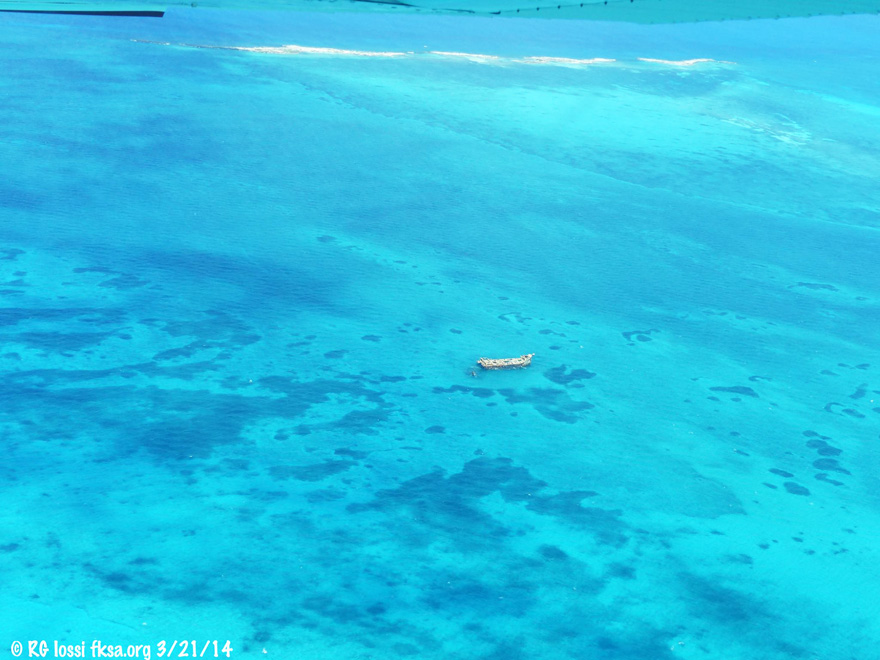
The Sapona grounded on the flats inside Turtle Rocks to the west.
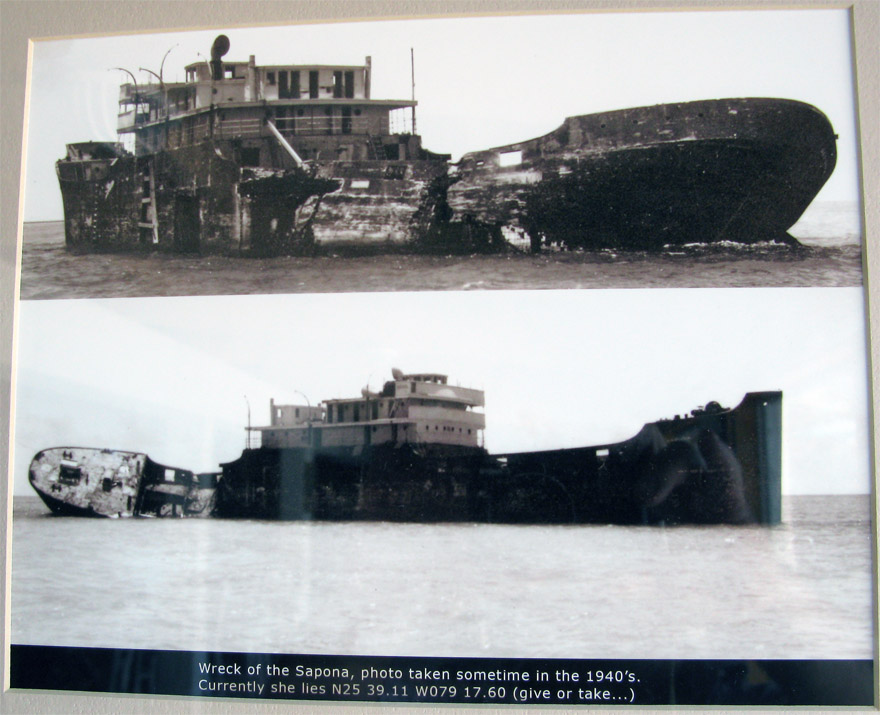
Shots of the Sapona after grounding, they claim in the 1940's. I suspect it was shot earlier than this, no blast or machine gun damage!
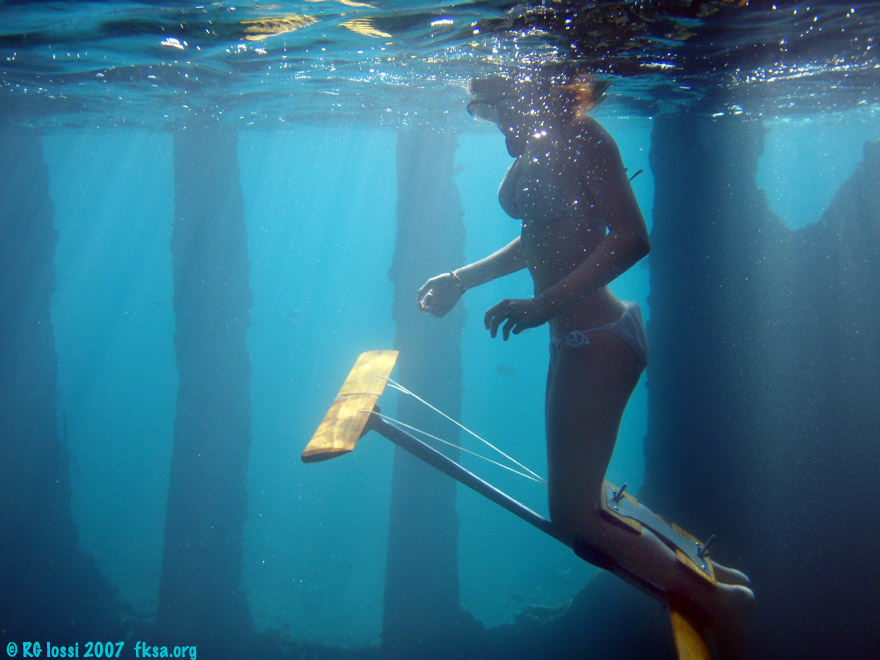
Floating in the hold on an Aqueon, easily accessed through bomb perforated sides of the ship. The daughter of a good friend swims with the Aqueon for the first time in and about the Sapona a few years back.
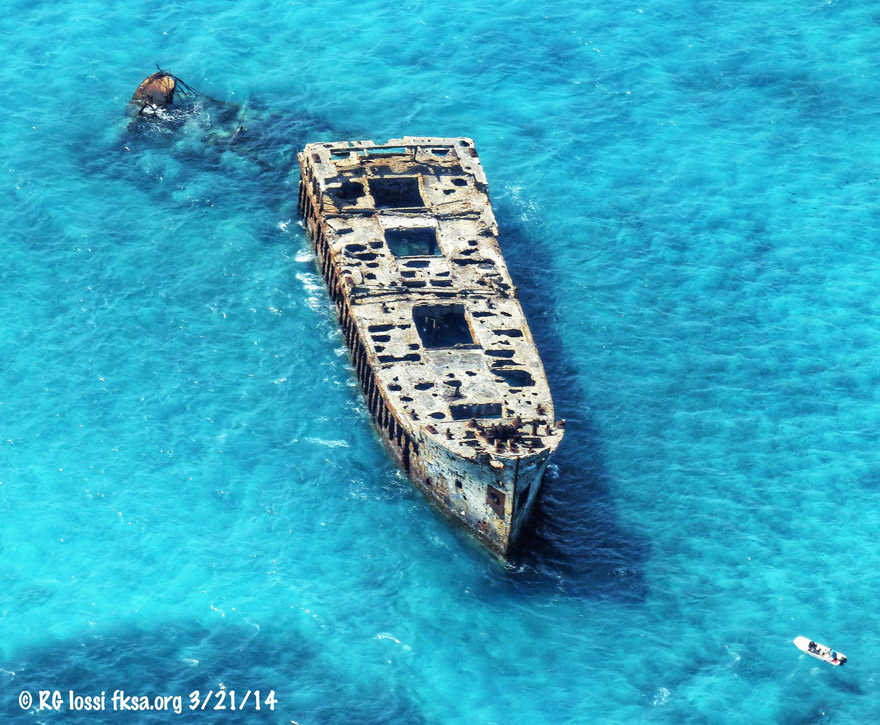
A closer aerial view of the ship
This is what
http://www.concreteships.org/ has to say about it:
"S. S. Sapona
The S. S. Sapona was a cargo steamer built by the Liberty Ship Building Company in Wilmington, North Carolina and launched in January, 1920. She is the sister ship of the Cape Fear.
The Sapona was purchased by Carl G. Fisher in Miami Beach, Florida. Fisher traded the ship's engine and machinery to a dredging company in exchange for dredge work and the ship itself was used for oil storage.
In April of 1924, the Sapona was sold to rum runner, Bruce Bethel, in the Bahamas. He towed the ship near Bimini where she was used as a floating warehouse for rum and whiskey during Prohibition. Bethel also planned to use the ship as a night club.
In 1926, the Sapona ran aground on a reef during a hurricane and the stern of the ship broke off from the rest of the ship. Bethel's liquor stocks were also destroyed and he died penniless in 1950."
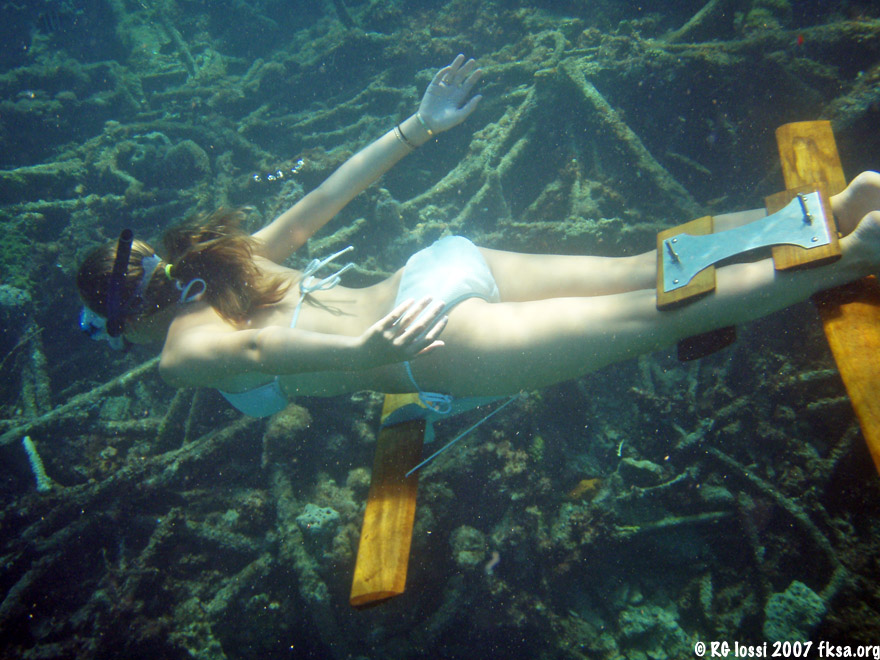
Lots of debris on the bottom around the wreck.
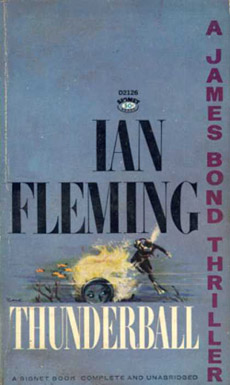
The Fleming classic and basis for the movies "Thunderball" and "Never Say Never." Lots of lore tangled in the wreck of the Sapona. Folks even find munitions around the wreck in the sand at times.

A deck level panorama of the Sapona, time, hurricanes, strafing and all the other stresses are taking a toll on the vessel
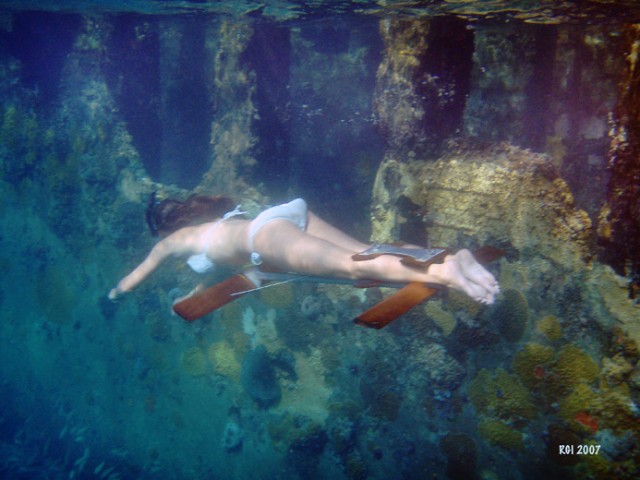
There are still more details about the Sapona's colorful past in "Run the Rum In: South Florida During Prohibition" By Sally J. Ling. Portions of the text can be viewed on
http://books.google.com/
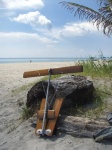
More about the novel swimming device, the Aqueon at:
http://fksa.org/showthread.php?t=4372

Climbed up the side of this thing to dive off the bow in the 1970's. Time and corrosion are taking a toll. It is still standing, for now.

Flight 19 in better days. More at:
http://en.wikipedia.org/wiki/Flight_19
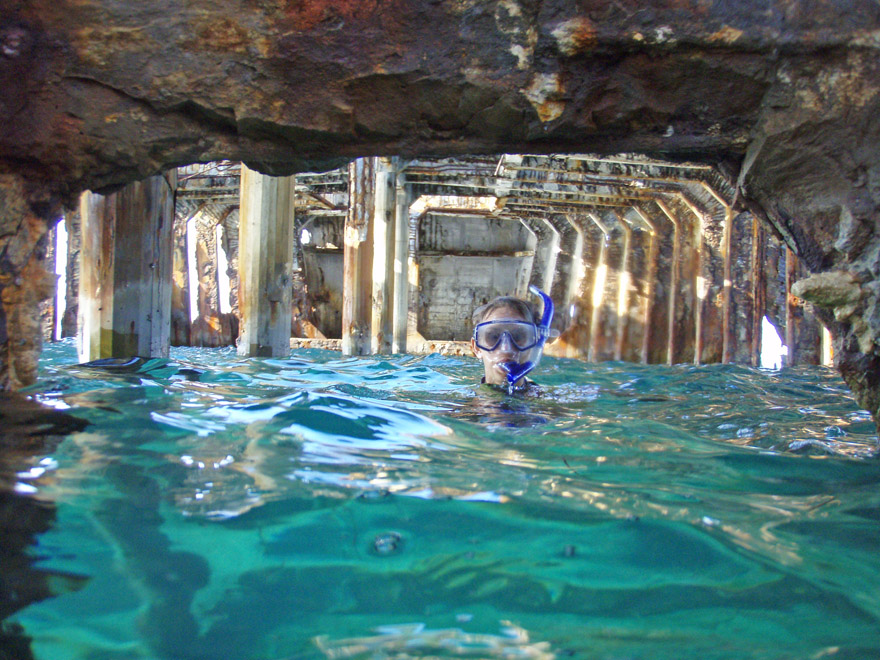
Beneath decks, above the water. Have your hard hat?
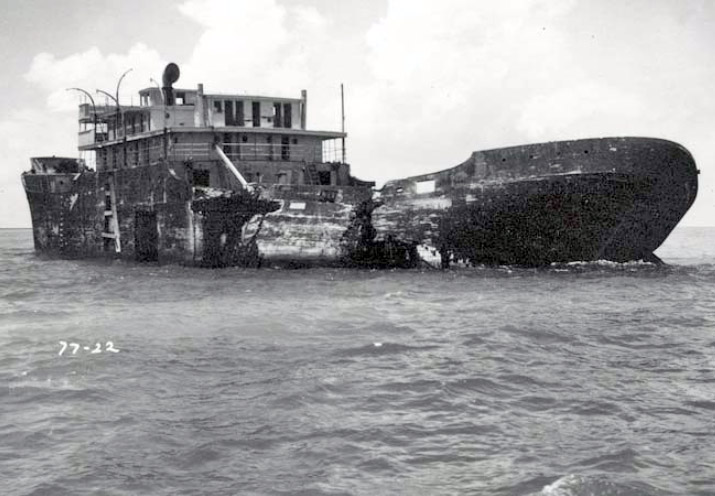
The Sapona is slightly more intact condition, still grounded but in the 1930's.
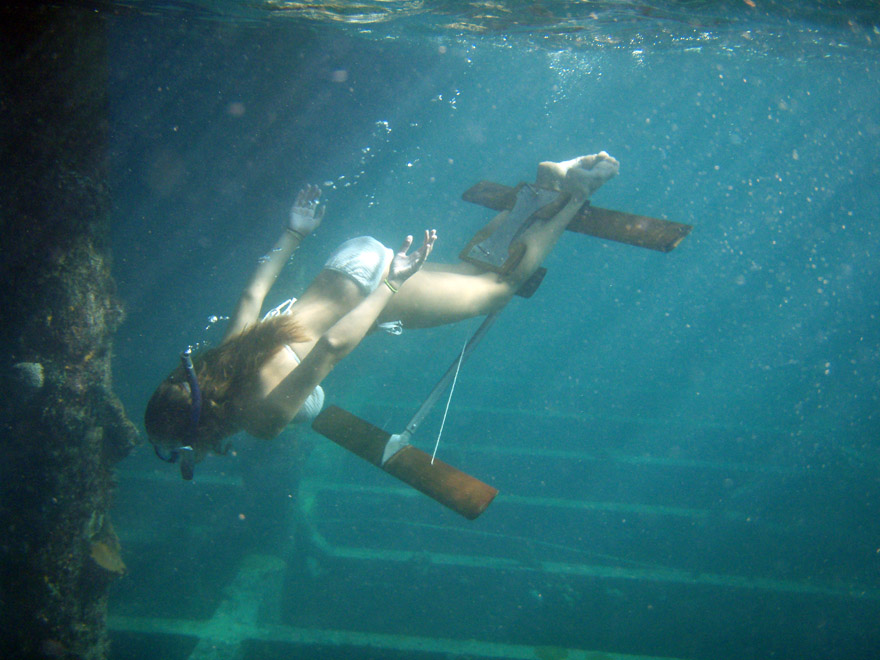
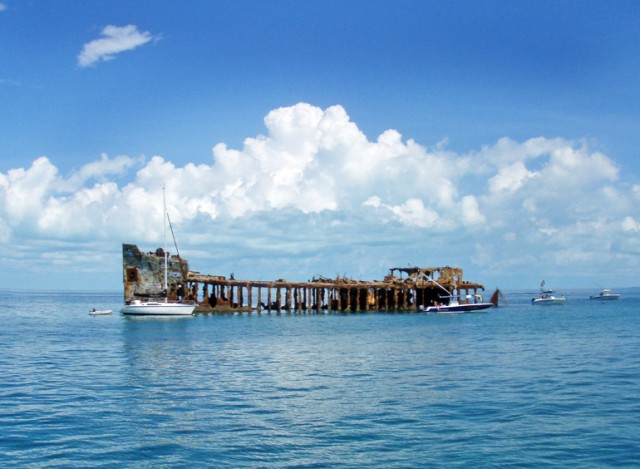
Note the before, images above and below, and after condition. The vessel has some construction similarities to a sidewalk. It has held together remarkable well considering the major trauma of being blasted by bombs and machine gun rounds, ripped by many hurricanes and attacked for almost 90 years by corrosion and chloride contamination. Don't make em like this anymore I suspect. It was made when there were critical steel shortages near the end of WWI. I recall a sister ship is grounded off New Jersey. When I first dove and climbed all over her at 16, there was more to the vessel, particularly the stern. Time has pulled mass away from the wreck.
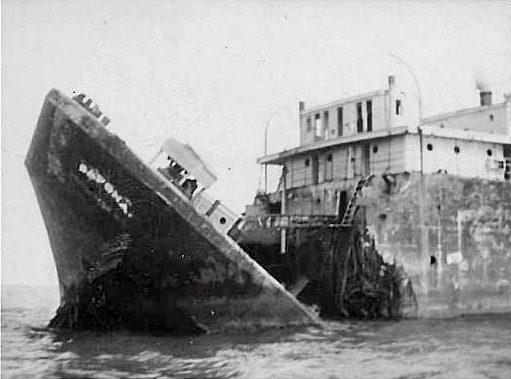
Her stern still broken off but with deck housings and appurtenances intact unlike today.
Photos from Broward County Historical Commission

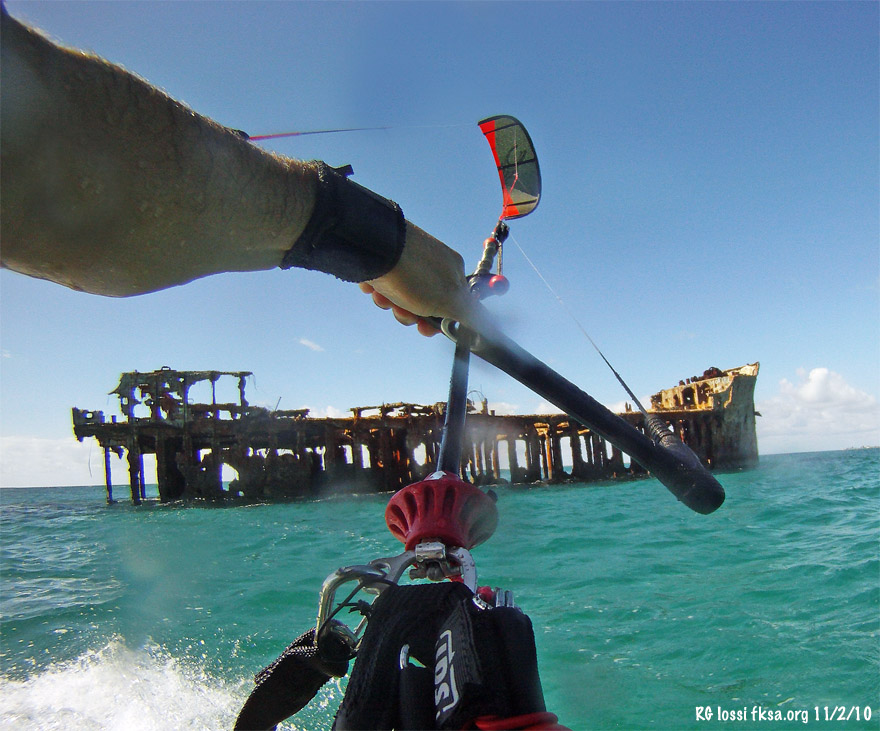
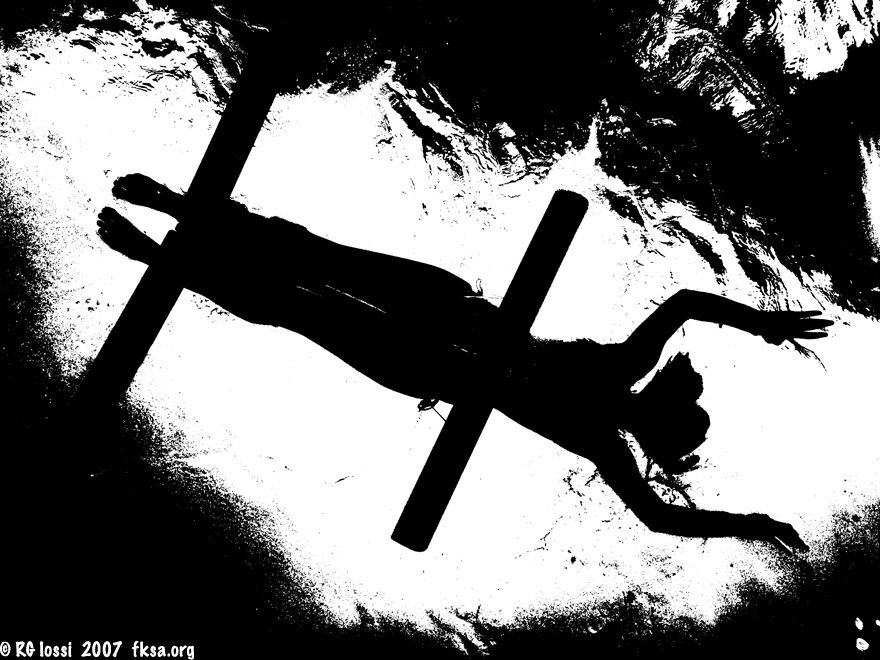
If you have a chance to visit the Sapona, do so. Climbing and jumping off of it isn't recommended at all despite appearances. The odds of not getting some type of injury aren't great, including having rotten concrete decking collapse under you to getting impaled on a rebar, to a nasty infection prone cut on exposed steel. It is a fun dive and someday it might decide to move on, into the past.
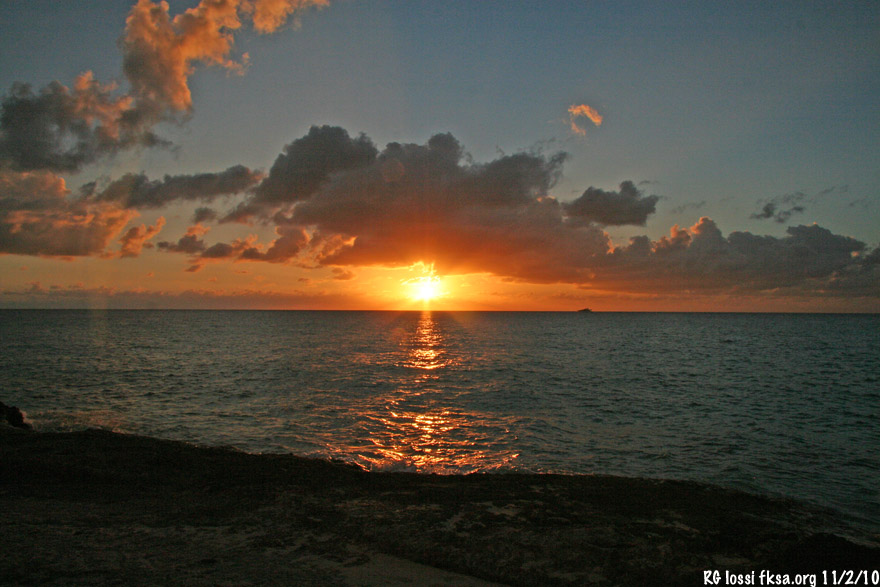
.